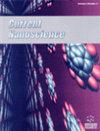Recent Progress in the Composites of Perovskite Nanocrystals and II-VI Quantum Dots: Their Synthesis, Applications, and Prospects
IF 1.5
4区 材料科学
Q4 BIOTECHNOLOGY & APPLIED MICROBIOLOGY
引用次数: 0
Abstract
The remarkable photoelectric characteristics of perovskite nanocrystals (NCs), including high fault tolerance, tunable photoluminescence (PL) emission, and high carrier mobility, contribute to making them especially attractive for photonic and optoelectronic applications. Unfortunately, the poor environmental thermal and light stability set obstacles to their industrial applications. Over the past 40 years, II-VI semiconductor quantum dots (QDs) have achieved many important photophysics findings and optoelectronic applications. Compared with perovskite NCs, II-VI semiconductor QDs still have a relatively weaker molar absorbance coefficient. Whereas, significant enhancement of both the stability and the optical performance of the composites of perovskite NCs and II-VI QDs are of interest for photovoltaic and optoelectronic devices. The composites of perovskite NCs and II-VI QDs come in two primary types: core/shell structures and heterojunction structures. To better understand the composites of perovskite NCs and II-VI QDs, the approaches of synthesis methods, their optoelectronic properties, carrier dynamics and potential applications in solar cells, light emitting diodes (LEDs) and photodetectors are summarized. Furthermore, the unmet problems and the potential applications are also presented.钙钛矿纳米晶体与II-VI量子点复合材料的研究进展:合成、应用与展望
摘要:钙钛矿纳米晶体(NCs)优异的光电特性,包括高容错性、可调谐的光致发光(PL)发射和高载流子迁移率,使其在光子和光电子应用中具有特别的吸引力。不幸的是,恶劣的环境热稳定性和光稳定性阻碍了它们的工业应用。在过去的40年里,半导体量子点(QDs)取得了许多重要的光物理发现和光电子应用。与钙钛矿纳米粒子相比,II-VI半导体量子点仍然具有相对较弱的摩尔吸光度系数。然而,钙钛矿NCs和II-VI量子点复合材料的稳定性和光学性能的显著增强是光伏和光电子器件的兴趣。钙钛矿NCs和II-VI量子点的复合材料主要有核/壳结构和异质结结构两种类型。为了更好地理解钙钛矿NCs和II-VI量子点的复合材料,本文综述了钙钛矿NCs和II-VI量子点的合成方法、光电性能、载流子动力学及其在太阳能电池、发光二极管(led)和光电探测器中的潜在应用。此外,还指出了该技术尚未解决的问题和潜在的应用前景。
本文章由计算机程序翻译,如有差异,请以英文原文为准。
求助全文
约1分钟内获得全文
求助全文
来源期刊

Current Nanoscience
工程技术-材料科学:综合
CiteScore
3.50
自引率
6.70%
发文量
83
审稿时长
4.4 months
期刊介绍:
Current Nanoscience publishes (a) Authoritative/Mini Reviews, and (b) Original Research and Highlights written by experts covering the most recent advances in nanoscience and nanotechnology. All aspects of the field are represented including nano-structures, nano-bubbles, nano-droplets and nanofluids. Applications of nanoscience in physics, material science, chemistry, synthesis, environmental science, electronics, biomedical nanotechnology, biomedical engineering, biotechnology, medicine and pharmaceuticals are also covered. The journal is essential to all researches involved in nanoscience and its applied and fundamental areas of science, chemistry, physics, material science, engineering and medicine.
Current Nanoscience also welcomes submissions on the following topics of Nanoscience and Nanotechnology:
Nanoelectronics and photonics
Advanced Nanomaterials
Nanofabrication and measurement
Nanobiotechnology and nanomedicine
Nanotechnology for energy
Sensors and actuator
Computational nanoscience and technology.
 求助内容:
求助内容: 应助结果提醒方式:
应助结果提醒方式:


